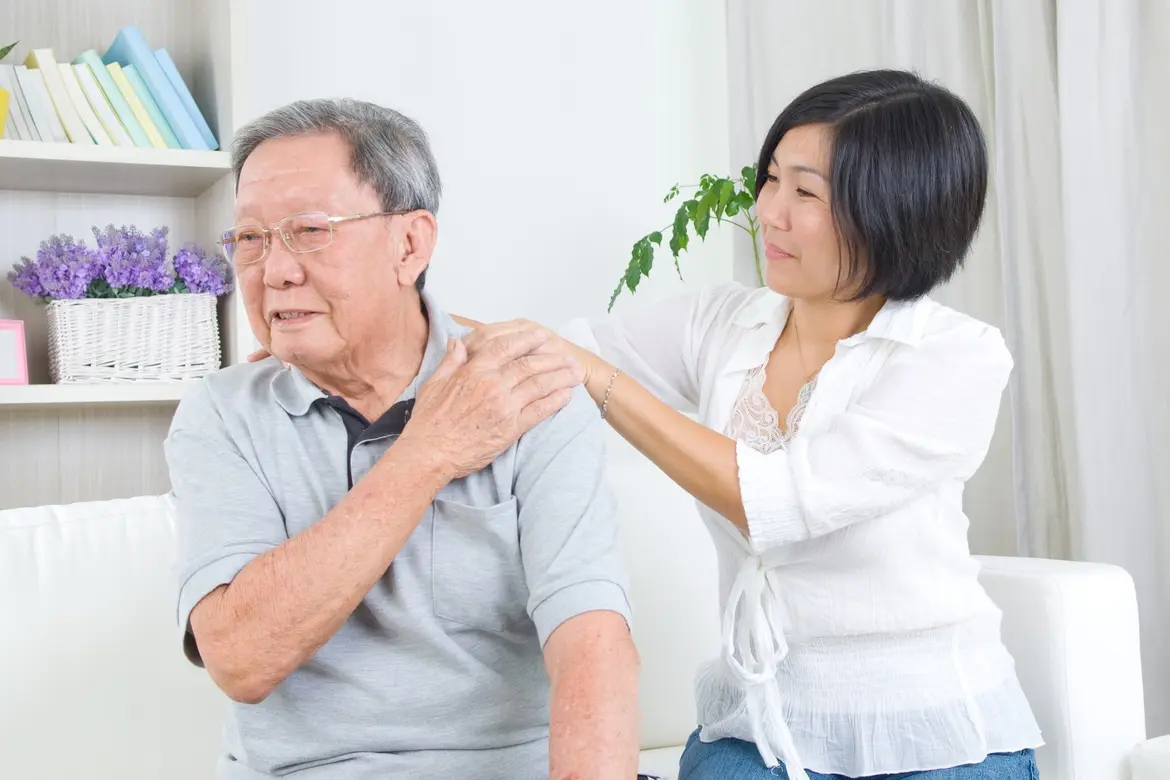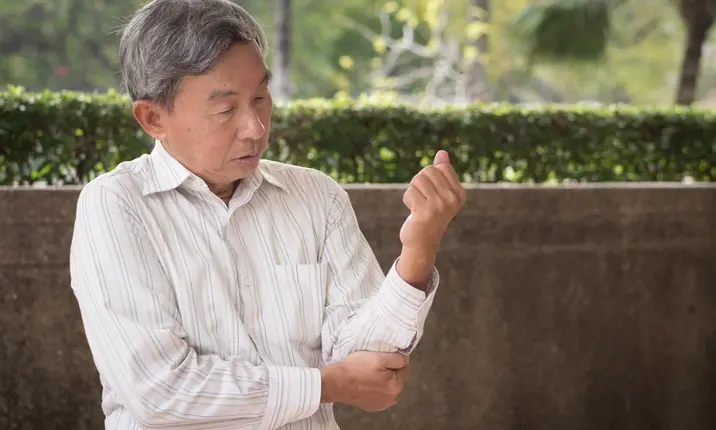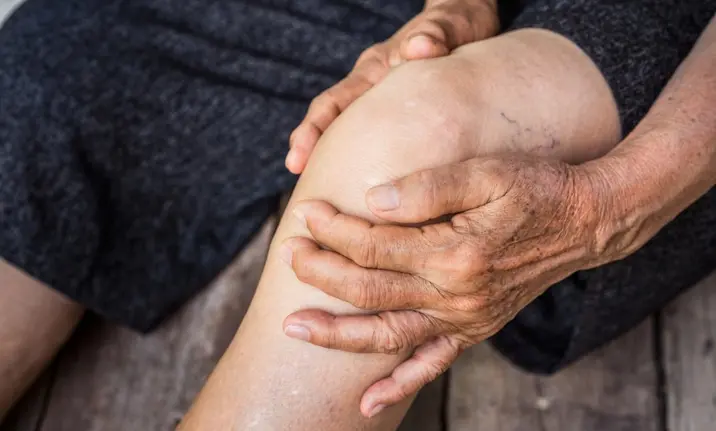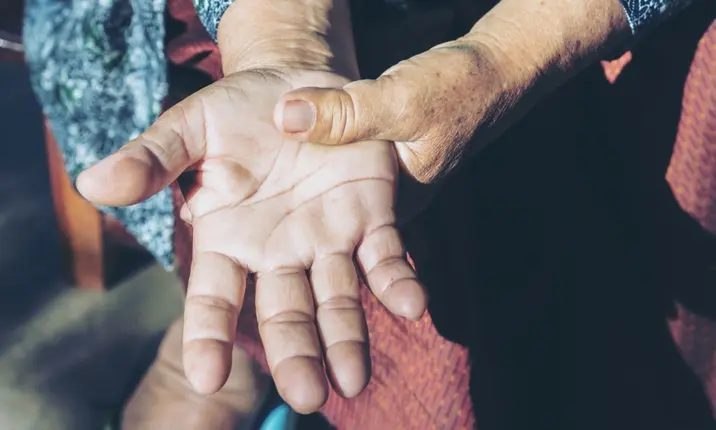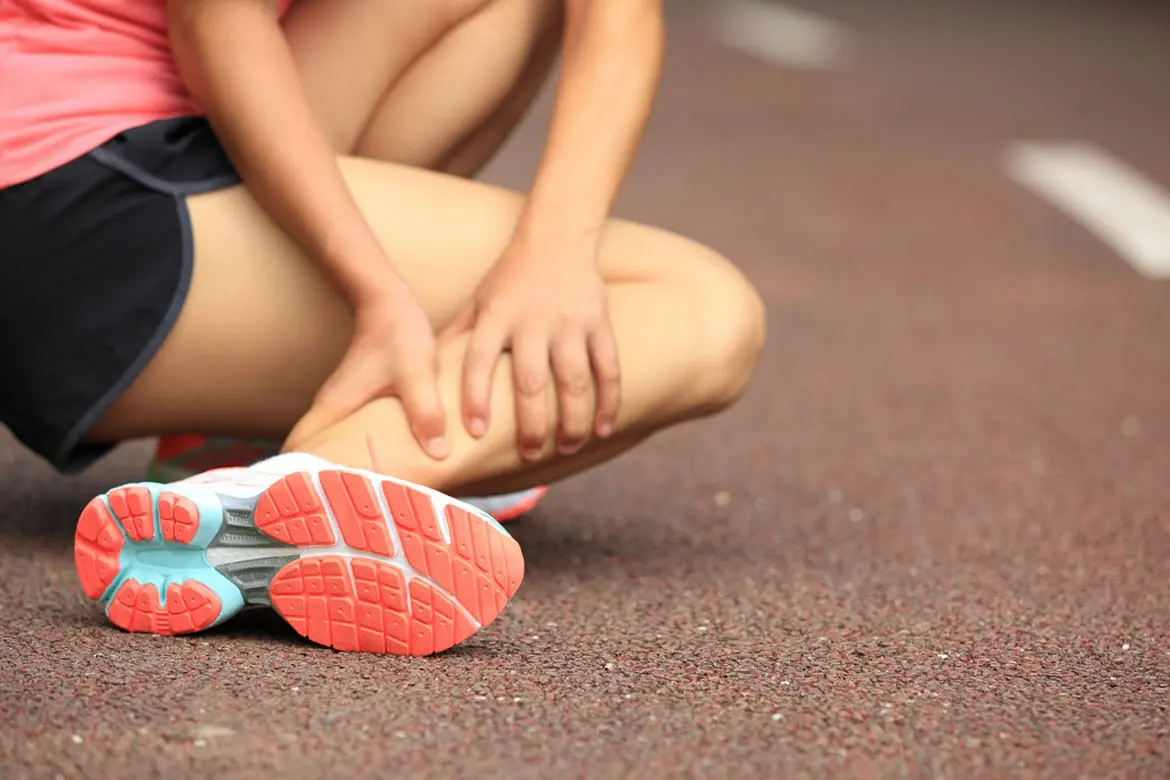According to the 2016 Well-being of the Singapore Elderly study conducted by the National Healthcare Group, about 1 in 5 seniors experience chronic pain. Two of the more commonly affected areas are the knees and ankles.
Osteoarthritis
Osteoarthritis is the most common type of degenerative joint disease and affects twice as many women as men who are 60 years old and above. In Singapore, it is estimated that more than 40% of the elderly suffer from knee osteoarthritis.
A common reason for long-term knee pain in older people is osteoarthritis. It is thought to be caused by wear and tear in the joint.
In a healthy joint, the knee bends and straightens smoothly because of the cartilage that covers the ends of the bones. Over time, damage to this cartilage can lead to osteoarthritis. Movement becomes restricted and pain gradually increases.
What is osteoarthritis?
There are 2 types of osteoarthritis – primary and secondary. Both types of osteoarthritis may affect your fingers, hips, knees, ankles or toes.
Primary osteoarthritis
Primary osteoarthritis occurs when the cartilage between your bones degenerates. As you age, the water content in your cartilage decreases, making it weaker and more susceptible to damage.
Secondary osteoarthritis
Secondary osteoarthritis, on the other hand, is not related to ageing and is caused by injury, disease or genetic factors.
Both types of osteoarthritis may affect your fingers, hips, knees, ankles or toes.
What are the symptoms of osteoarthritis?
The symptoms for both types of osteoarthritis are similar. Pain and stiffness in your affected joints during or after movement are common, as are tenderness and swelling.
You will experience a loss of flexibility in your affected joints, and a grating sensation that is accompanied by clicking or cracking sounds.
In the early stages of osteoarthritis, you may only feel pain and discomfort when you are using your joints, or when you awake in the morning. However, as your condition worsens, you may experience these symptoms even when you are resting.
What makes osteoarthritis worse?
Delaying treatment
Not seeking treatment as soon as possible can worsen your condition as your cartilage degenerates further. Moreover, your body works as a system and other joints will have to compensate. This may result in injury to your other joints, which in turn, complicates matters and exacerbates your pain.
Weak muscles
Strengthening the muscles around your joints can alleviate the pain, so low-impact exercises are recommended. However, depending on the severity of your condition, your orthopaedic specialist may advise you to seek treatment first before exercising.
Dehydration
As your cartilage is 70 – 80% water, you need to remain well hydrated for your joints to work properly. Insufficient water intake can lead to greater pain for osteoarthritis patients.
Overweight
The heavier you are, the greater the wear rate of your joint cartilage and hence the onset and progression of osteoarthritis. Maintaining an appropriate body mass index is a good way to prevent osteoarthritis, as well as other health problems.
How is osteoarthritis treated?
There is currently no cure for osteoarthritis. However, timely treatment and a holistic pain management approach can minimise the impact of this debilitating disease on your quality of life.
Non-surgical treatment
These treatments include physiotherapy to strengthen muscles and improve joint flexibility, and the use of painkillers and anti-inflammatory drugs to alleviate pain. Your orthopaedic specialist may recommend intra-articular hyaluronic acid injections (also known as visco-supplementation) if you do not respond well to the use of drugs and physiotherapy.
Surgery
This is offered when your condition is severe and if you have not responded well to non-surgical treatments. Some common procedures include arthroplasty, the replacement of damaged joints with artificial ones, and knee arthroscopy, the cleaning and repair of damaged joints. A much less common procedure is arthrodesis – the removal of the arthritic joint and the fusion of two bones on each end of the joint.
Patellar tendon tears
Patellar (knee) tendon tears can happen to anyone, but other than athletes, seniors aged 65 and above are especially prone to this injury due to tendon degeneration.
What is a patellar tendon tear?
The patellar tendon connects the bottom of your knee cap to your shin bone. You may experience a partial tear or complete rupture in your patellar tendon. In a partial tear, the tendon is damaged but remains grossly intact. A complete rupture would result in a severed tendon and an unattached knee cap. In such cases, you would not be able to straighten your knee.
What are the symptoms of a patellar tendon tear?
Pain, tenderness and swelling of the knee are common symptoms of a ruptured patellar tendon. As the tendon becomes more damaged, the pain and inflammation get progressively worse. In complete ruptures, you may hear a 'pop' at the time you sustained the injury, experience extreme difficulty and instability in walking, and your knee cap may move into your thigh as it is no longer attached to your shin bone.
What makes patellar tendon tears worse?
Delaying treatment
A delay of more than 6 weeks after sustaining the injury would complicate its treatment. The longer you delay treatment after injury, the more difficult it is to repair the tendon. In some cases, it will necessitate a tendon reconstruction instead of a repair, which may reduce the likelihood of you making a full recovery.
How is a patellar tendon tear treated?
Minor tears
Smaller tears may not require surgery. Your orthopaedic specialist may put your knee in a brace for 4 – 8 weeks, and prescribe you painkillers, anti-inflammatory medicine and physiotherapy.
Severe tears and ruptures
In such cases, immediate surgical repair of the patellar tendon is usually recommended. For some cases, it is not possible to repair the torn patellar tendon and a reconstruction is needed. This procedure may involve replacing your damaged tendon with tendons from other parts of your body or from a donor.
Rheumatoid arthritis
Rheumatoid arthritis is an autoimmune disease that mostly affects those between 40 – 60 years old, and women are 3 times more frequently affected than men. In Singapore, it is the most common chronic inflammatory arthritis and about 0.5 – 1% of the population suffers from it.
What is rheumatoid arthritis?
Not to be confused with osteoarthritis, rheumatoid arthritis occurs when your immune system attacks your joints. It may also affect your organs and tissue. The cause of rheumatoid arthritis remains unknown, but genetic and environmental factors may play a role. Research has shown that smokers have a higher risk of contracting this disease.
What are the symptoms of rheumatoid arthritis?
Rheumatoid arthritis typically affects your small joints such as the wrists, hands, ankles and feet. In severe cases, it may attack your larger joints, including shoulders, elbows, hips, and knees. It causes pain, redness, swelling and stiffness, especially in the morning. If left untreated, rheumatoid arthritis can cause severe joint deformity and prevent sufferers from performing simple tasks like writing, gripping cutlery, or buttoning a shirt.
What makes rheumatoid arthritis worse?
Delaying treatment
You should seek treatment within 3 – 6 months after symptoms appear. After that, your joints may be irreversibly damaged.
Smoking
Smoking not only increases your risk of contracting this disease, but also worsens your condition. Clinical studies found that smoking affects the efficacy of treatment and smokers experience more severe pain than non-smokers.
A sedentary lifestyle
Minimising physical activity may bring short-term relief for suffers. But in the long run, a sedentary lifestyle can lead to weight gain and increased stiffness and pain in your weight-bearing joints, as well as fatigue and depression.
How is rheumatoid arthritis treated?
There is currently no cure for rheumatoid arthritis. However, prompt and aggressive treatment can help minimise the impact of this disease on your quality of life.
Non-surgical treatment
Your orthopaedic specialist may recommend physiotherapy to strengthen your muscles and improve joint flexibility, the use of painkillers and anti-inflammatory medicine to alleviate your pain, and the prescription of disease-modifying anti-rheumatic drugs and newer immunotherapies to slow the progression of the disease.
Surgery
Surgery can help restore the use of your affected joints, reduce pain and correct deformities. These procedures include arthroplasty, knee arthroscopy, arthrodesis, and synovectomy – the removal of the inflamed joint lining.
If you suffer from chronic pain, make an appointment to see an orthopaedic specialist directly. There is no reason to suffer silently and increase the risk of the condition getting worse.
